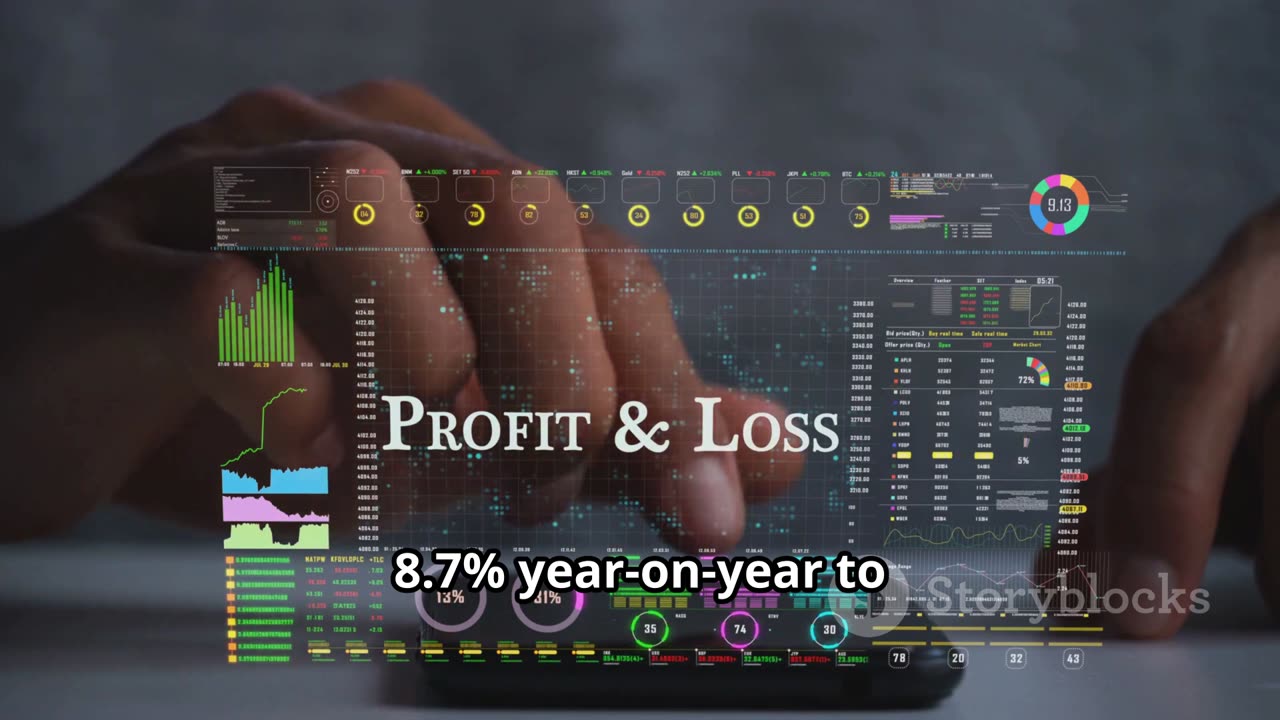Premium Only Content

Infosys Analysis | Stock Market | #infosys
Analyzing Infosys (INFY) stock requires a look at its recent performance, financial health, and future outlook based on analyst and company projections. Here's a breakdown of the key factors:
Recent Financial Performance (Q1 FY26)
Profit and Revenue: Infosys reported a strong Q1 FY26, with consolidated net profit rising by 9% year-over-year (YoY) to ₹6,921 crore. Revenue also increased by 8% YoY to ₹42,279 crore.
Guidance: The company revised its FY26 revenue growth guidance upward to a range of 1% to 3% in constant currency terms, from a previous range of 0% to 3%. This reflects early signs of demand stabilization and a confident outlook. The operating margin guidance was maintained at 20-22%.
Deal Wins: Infosys secured large deal wins worth $3.8 billion, with 55% of these being new deals. This indicates a strong competitive position and growing client relationships.
Digital and AI: The company is seeing significant traction in AI and consolidation projects, which is a key driver of its performance. Its enterprise AI capabilities are a notable strength.
Challenges: Despite positive results, the company's profit after tax (PAT) was marginally lower on a sequential basis compared to the previous quarter. Wage hikes and higher variable pay had a 100 basis point impact on the Q1 margin.
Stock Price and Analyst Outlook
Current Stock Price: As of August 29, 2025, the stock closed at ₹1,469 on the NSE.
Analyst Ratings: Multiple brokerage firms have maintained or upgraded their ratings on Infosys. For example, Investec recently upgraded Infosys to "Buy" with a price target of ₹1,655. JM Financial and Choice Broking have also retained or revised their ratings to "Buy," with price targets of ₹1,840 and ₹1,810 respectively.
Price Targets: The average price target from analysts for Infosys stock is around ₹1,748, with a range from a low of ₹1,490 to a high of ₹2,085. This suggests a potential upside from the current price.
Key Factors for Price Movements: The stock's performance is influenced by macroeconomic factors, particularly in the U.S., which is a major market for the IT sector. A potential recovery in discretionary spending due to declining interest rates and the mainstream implementation of AI projects are seen as positive catalysts for the stock.
Fundamental Strengths
Strong Financials: Infosys is considered a financially sound company. It is virtually debt-free and has a good track record of return on equity (ROE).
Healthy Dividends: The company has been maintaining a healthy dividend payout.
Market Position: Infosys is a global leader in next-generation digital services and a key player in the IT services industry.
Risks and Considerations
Macroeconomic Headwinds: Ongoing macroeconomic uncertainties and cautious client spending, particularly in North America, could limit revenue growth.
Competitive Landscape: Infosys faces stiff competition from other major IT services firms.
Voluntary Attrition: The voluntary attrition rate has been a point of concern, although the company is taking measures to address it.
Analyzing Infosys (INFY) stock requires a look at its recent performance, financial health, and future outlook based on analyst and company projections. Here's a breakdown of the key factors:
Recent Financial Performance (Q1 FY26)
Profit and Revenue: Infosys reported a strong Q1 FY26, with consolidated net profit rising by 9% year-over-year (YoY) to ₹6,921 crore. Revenue also increased by 8% YoY to ₹42,279 crore.
Guidance: The company revised its FY26 revenue growth guidance upward to a range of 1% to 3% in constant currency terms, from a previous range of 0% to 3%. This reflects early signs of demand stabilization and a confident outlook. The operating margin guidance was maintained at 20-22%.
Deal Wins: Infosys secured large deal wins worth $3.8 billion, with 55% of these being new deals. This indicates a strong competitive position and growing client relationships.
Digital and AI: The company is seeing significant traction in AI and consolidation projects, which is a key driver of its performance. Its enterprise AI capabilities are a notable strength.
Challenges: Despite positive results, the company's profit after tax (PAT) was marginally lower on a sequential basis compared to the previous quarter. Wage hikes and higher variable pay had a 100 basis point impact on the Q1 margin.
Stock Price and Analyst Outlook
Current Stock Price: As of August 29, 2025, the stock closed at ₹1,469 on the NSE.
Analyst Ratings: Multiple brokerage firms have maintained or upgraded their ratings on Infosys. For example, Investec recently upgraded Infosys to "Buy" with a price target of ₹1,655. JM Financial and Choice Broking have also retained or revised their ratings to "Buy," with price targets of ₹1,840 and ₹1,810 respectively.
Price Targets: The average price target from analysts for Infosys stock is around ₹1,748, with a range from a low of ₹1,490 to a high of ₹2,085. This suggests a potential upside from the current price.
Key Factors for Price Movements: The stock's performance is influenced by macroeconomic factors, particularly in the U.S., which is a major market for the IT sector. A potential recovery in discretionary spending due to declining interest rates and the mainstream implementation of AI projects are seen as positive catalysts for the stock.
Fundamental Strengths
Strong Financials: Infosys is considered a financially sound company. It is virtually debt-free and has a good track record of return on equity (ROE).
Healthy Dividends: The company has been maintaining a healthy dividend payout.
Market Position: Infosys is a global leader in next-generation digital services and a key player in the IT services industry.
Risks and Considerations
Macroeconomic Headwinds: Ongoing macroeconomic uncertainties and cautious client spending, particularly in North America, could limit revenue growth.
Competitive Landscape: Infosys faces stiff competition from other major IT services firms.
Voluntary Attrition: The voluntary attrition rate has been a point of concern, although the company is taking measures to address it.
Disclaimer: This is a general analysis based on available data and should not be considered as investment advice. Investors should conduct their own research and analysis before making any investment decisions.
-
 8:09
8:09
MattMorseTV
14 hours ago $2.20 earnedTrump scores 17th CONSECUTIVE Supreme Court VICTORY.
16.7K24 -
 2:11:25
2:11:25
Side Scrollers Podcast
16 hours agoUK JAILS TV WRITER FOR WRONG THINK + TWITCH ALLOWS CYBERSTALKING + MORE | SIDE SCROLLERS LIVE
24.4K6 -
 10:47
10:47
Nikko Ortiz
1 day agoThese Tik Tok Clips Are Extremely Painful...
37.7K4 -
 13:43
13:43
GritsGG
12 hours agoI Made a Brand New Warzone Account! Will I Get Bot Lobbies?
1.69K -
 1:09:23
1:09:23
The HotSeat
12 hours agoTrump’s Parade = Mocked, China’s Parade = Praised: Leftist Hypocrisy EXPOSED
26.1K33 -
 LIVE
LIVE
Lofi Girl
2 years agoSynthwave Radio 🌌 - beats to chill/game to
206 watching -
 4:34:26
4:34:26
Akademiks
6 hours agoICEMAN EPISODE 3
148K -
 2:04:10
2:04:10
Inverted World Live
8 hours agoThe Robots Are Here | Ep. 103
61.6K14 -
 1:21:53
1:21:53
Man in America
16 hours agoInflation, Debt & War: The 2032 Crash Cycle Is Here—Nations Will FALL w/ Martin Armstrong
58.1K20 -
 1:53:48
1:53:48
Adam Does Movies
15 hours ago $3.13 earnedTalking Movies + Ask Me Anything - LIVE
24.1K2